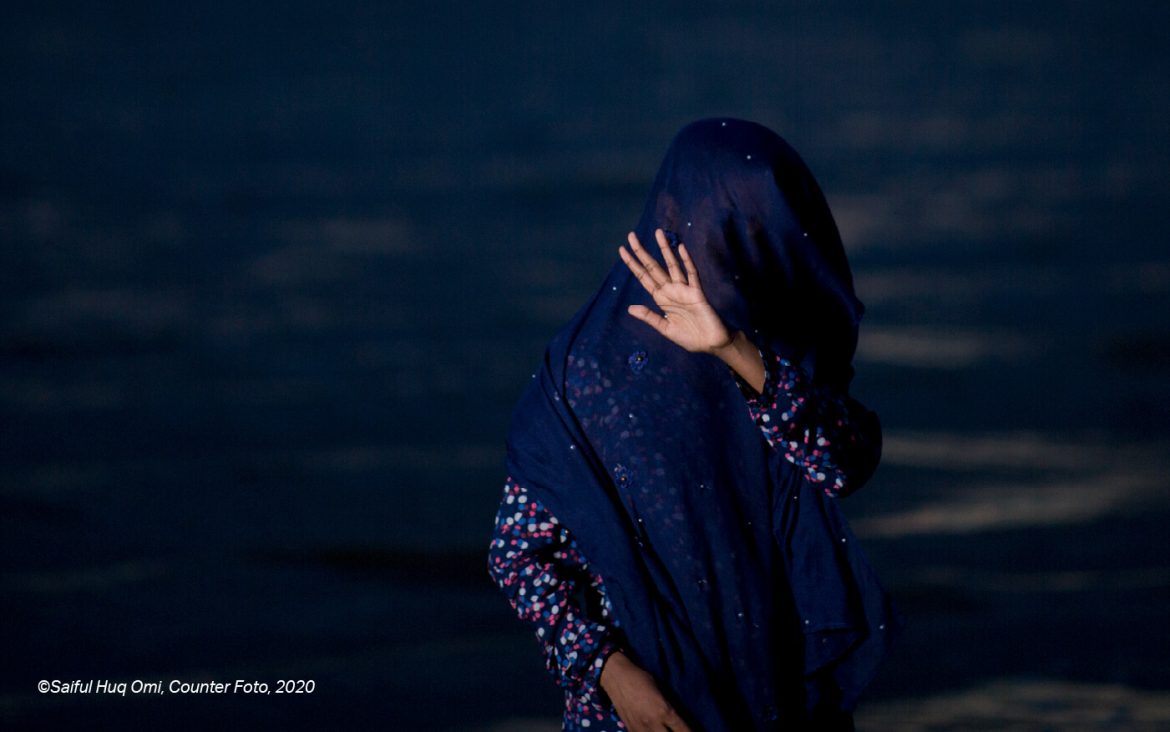A shocking report by ActionAid reveals a horrifying reality: for Rohingya women and girls in the overcrowded and forgotten camps of Bangladesh, the risk of rape and sexual violence is not a distant possibility, but part of their daily geography and lived experience. This violence, hidden behind walls of silence, insecurity, and absolute vulnerability, manifests in various forms and has devastating consequences that will affect generations.
Sexual violence in these camps is not limited to one specific form but encompasses a wide range of violent acts. At the top of this grim list is sexual rape; the most brutal form, occurring in secluded places, near camp boundaries, or even inside the temporary shelters they call home. Perpetrators often use the cover of darkness, the density of the population, and the lack of adequate lighting to conceal their identities.
Furthermore, verbal and non-verbal sexual harassment has become commonplace. Women on their daily routes, especially near critical points like water collection areas and sanitation facilities, face catcalling, stalking, and unwanted physical contact. These behaviors turn public spaces into psychological minefields, making every trip outside the home an anxiety-ridden journey.
Another form of this violence is sexual extortion. Reports indicate that some armed actors within the camps, or even those responsible for distributing humanitarian aid, abuse their positions, demanding sexual favors in exchange for access to food, essential hygiene supplies, or even permission to leave a specific area. This turns aid, which should be a lifeline, into a tool for abuse and exploitation.
Finally, the insecure conditions and extreme poverty have made Rohingya women and girls easy prey for human traffickers. Lured by promises of better work, marriage, or a safe life elsewhere, they are taken outside the camps and, in many cases, forced into prostitution.
Identifying the perpetrators paints a complex and horrifying picture of the depth of the catastrophe. The report clearly points to two main sources of danger that intensify the victims’ feelings of betrayal and helplessness.
First, violence within the community and family (by known men). The overwhelming psychological pressures of life in unstable, futureless, and overcrowded conditions lead to increased tension and violence within households. Women may be abused by family members, relatives, or other known camp residents. This makes reporting the crime nearly impossible due to fear of scandal, revenge, or the collapse of the victim’s only remaining support structure.
The second, and most alarming, source of danger is violence by the Bangladeshi Armed Police Battalion (APBn). When those tasked with protecting the most vulnerable become the aggressors, the victim is completely trapped with no sanctuary left. Women are terrified of reporting violence by police members due to a deep fear of arbitrary arrest, further harassment, or retaliation against their families. This creates a culture of impunity where perpetrators, in uniform or not, are assured they will never be held accountable.
They suffer in silence because access to specialized psychological and counseling services is almost non-existent. This psychological anguish is compounded by social isolation. A woman who has been raped is often ostracized by her own community due to the associated stigma. This isolation, which should be met with support, deepens her suffering.
On the other hand, unwanted pregnancies and sexually transmitted diseases are other catastrophic consequences. Many victims, due to a lack of access to reproductive health services, post-rape medical care, and treatment, face unwanted pregnancies or contract diseases like HIV.
These horrific conditions lead to forced and early marriages. Fearing rape, families force their daughters into marriage at very young ages in an attempt to protect them. This only creates a vicious cycle of vulnerability, as these young girls are physically, emotionally, and mentally unprepared for marriage and pregnancy, finding themselves in unequal and potentially violent relationships.
The seemingly simple requests from women for better lighting and the replacement of male police with female officers are symbols of the deeper, urgent solutions that must be pursued. What is truly needed to break this shameful cycle of violence goes beyond installing a few lights and includes fundamental actions:
- Establishing safe and confidential reporting mechanisms managed by independent international bodies and trusted local community organizations, so victims can speak out without fear of reprisal.
- A summons to justice and a complete end to impunity through urgent, transparent, and independent investigations into allegations against security forces and the decisive punishment of all perpetrators, whether residents or armed officers.
- Ensuring access to comprehensive, integrated services including immediate medical care, long-term psychosocial support, and legal counseling in secure centers with trained staff, predominantly women.
- Finally, the real economic and social empowerment of women through the creation of educational and employment programs that provide financial independence is key, so they can be socially strengthened, resist violence, and advocate for their rights.
The systematic sexual violence against Rohingya women is not just a human tragedy; it is a calculated strategy to crush morale, humiliate, and destroy an already fractured and traumatized community. Silence, inaction, and the world turning away from this human catastrophe equates to unwitting but real complicity with the perpetrators. Immediate and decisive action by the international community is not an option, but an undeniable moral imperative.
Faezeh Aghamohammady


